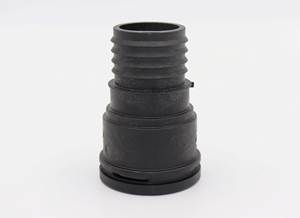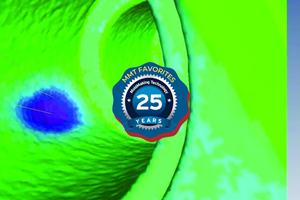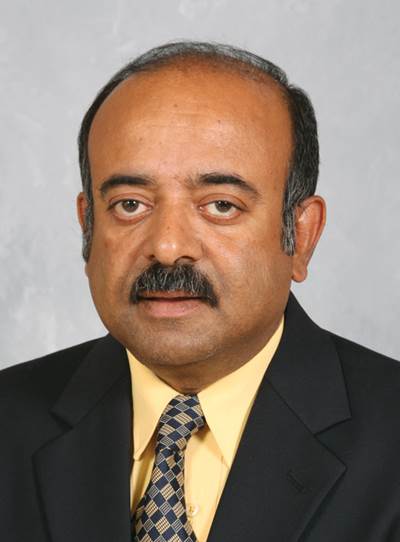Chicago Mold Engineering: “Head”ing Into the Future
With continued focus on its automotive headlamp reflector molds niche, CME relies on technology and equipment advancements to “drive” success.
Chicago Mold Engineering Co., Inc. (CME, St. Charles, IL) has been manufacturing plastic injection and compression molds for the thermoset and thermoplastic industries since 1944 and has emerged as an industry leader in the production of multi-cavity thermoset injection molds for automotive headlamp reflectors. Thanks to changes in technology and equipment over the past 10 years, the company has been able to stay on the cutting edge of their niche.
“We are considered to be the best provider for thermoset injection molds for automotive headlamp reflectors,” emphasizes CME Executive Vice President of Business Development Dick Laverty. “Over the last 10 years we have developed many unique features for these molds that have allowed our customers to minimize their scrap rate—which is the biggest source of lost revenue for them. The reflector is the most critical part of the headlamp assembly since it is the part that directs the light in the right direction. Any distortion in the surfaces of the reflector would create a light path that would be unacceptable. We have developed ways with our 5-axis machining and close tolerance EDM equipment that gives our customers usable parts the first time the mold is sampled. We also have developed a unique cold runner system and a center gating system with gate cutters that allows molding of the reflector parts with no gate trimming—which eliminates another possible source of scrap.”
Technology Triumphs
CME has “advanced by leaps and bounds” in the area of inspection and reverse engineering, Laverty notes. “With the purchase of our white light photogrammetizing and scanning system, we can now inspect the cores and cavities for dimensional correctness in about one-fifth of the time it used to take us in our coordinate measuring equipment,” Laverty explains. “With today’s business climate we have a number of customers that purchase some of their molds offshore and then end up with the mold—but have no 3-D data for all of the mold surfaces. With our system, we can take these molds and by photogrammetizing the cores, cavities and any side actions we can create a fully surfaced 3-D model of the mold, which then allows us to make any part changes that the customer may want and in the case of mold damage we can repair the mold back to its original surfaces. As we develop our techniques using this system we are finding new application for it on a regular basis.”
Equipment Advances
According to Laverty, in 1996 CME had a total employment of 65 with 14 of those employees doing the Engineering and Programming. Today, that number is 55 employees—with only five in the Engineering Department. “Technology advances allowed us to move all of the programming to the manufacturing floor,” Laverty notes. “Our Engineering Department has evolved to where we now do all of the mold designs in full 3-D and export the mold design to the plant floor as a solid model. All of the programming is now done on the plant floor by the machine specialists at the individual machines.
“In 1996 we had five EDM sinkers and only two of those machines had robotics for changing the electrodes,” he continues “We also had one high-speed graphite milling machine where we produced most of our electrodes. The EDM technology has advanced to the point where we now have five CNC EDM machines with robotics and our latest two machines are coupled in a work cell with a 5-axis high-speed graphite mill. We machine the electrodes, qualify the electrodes and robotically move the electrodes from the graphite mill to the EDM machines totally unattended by using the latest in computer technology to perform the functions that 10 years ago were mostly manual functions.”
The NC machining area also has experienced changes. “We used to have three horizontal boring mills and two large vertical machines with no automatic toolchanging functions,” Laverty says. “Today, we have two horizontal boring mills, one large horizontal 5-axis machine, three medium-sized high speed machining centers with automatic tool changers and four vertical high-speed machining centers—two of which have full 5-axis capabilities. With the ever-changing technology in software development we are now able to do all of the programming on the shop floor in advance of the steel being loaded into the machines so that the only dead spindle time is the time it takes to set up the blocks prior to machining.
“Another development that has minimized our dead spindle time is the use of magnets for holding the work on the machines,” Laverty adds. “We now do very few setups using bolts and clamps—which also allows the machine specialists to be more productive. With the advanced technology over the last decade we now have the ability to machine all of the mating surfaces of the mold parting lines to so fine of a finished detail that fitting of the shutoff surfaces is now virtually eliminated.”
Seeing The Future
Laverty is optimistic CME will continue to evolve and remain profitable. “We are about a month away from moving into our latest addition—which will add 15,000 square feet to the manufacturing area of our plant and bring our total square footage to 55,000,” he states. “This will increase our ability to add larger 5-axis machining capabilities through the purchase of additional ‘state-of-the-art’ equipment, which will utilize the latest in technological advances available. We also will move our three gundrilling machines into the new addition, which are now in another facility. This will save us quite a bit of time and money by having all of the gundrilling equipment in the same facility.
“Looking into the future I see our company remaining as one of the premier moldmaking companies in the global marketplace,” he continues. “We have remained competitive by staying current with technology and by never being complacent in where we are. There is an old saying that states ‘He who hesitates is lost’ and with today’s ever-changing technology if you hesitate to stay current you will be lost in the sea of change. With our younger generation of employees meshing with the years of experience that we have in our older employees, we have what we consider to be a good ‘blend’ of aggressive youth coupled with seasoned knowledge—creating a company ready to push forward with the most exciting times in moldmaking still to come.”
Related Content
Five-Axis Vertical Mill Increases Mold Shop Capacity by Reducing Setups
Zero Tolerance now processes blocks — from squaring to waterline drilling to rough and finish milling — on a single five-axis CNC mill, reducing setups and moving blocks in/out of multiple machines without sacrificing accuracy and surface finish.
Read MoreHow to Harness 3D Scanning for Mold Tool Repairs
3D scanning supports the repair of molds with no history, drawings or design files.
Read MoreLaser Welder Yields Fast, Precise Mold Repair
Intralox's integration of the Alpha Laser ALFlak has significantly improved their tool room efficiency when it comes to difficult welds and urgent repairs.
Read MoreCT Scanning Helps Micro Molder Reduce Cost of First Article Inspections
CT scanning services performed by 3D ProScan, a division of NyproMold Inc. provides MTD Micro Molding with accurate, high-resolution internal and external measurements performed about seven times faster and at significant cost savings.
Read MoreRead Next
A vision for carbon fiber in the automotive market
Dr. Kalyan Sehanobish shares a vision for carbon fiber in the automotive market.
Read MoreHow to Use Continuing Education to Remain Competitive in Moldmaking
Continued training helps moldmakers make tooling decisions and properly use the latest cutting tool to efficiently machine high-quality molds.
Read MoreAre You a Moldmaker Considering 3D Printing? Consider the 3D Printing Workshop at NPE2024
Presentations will cover 3D printing for mold tooling, material innovation, product development, bridge production and full-scale, high-volume additive manufacturing.
Read More




















